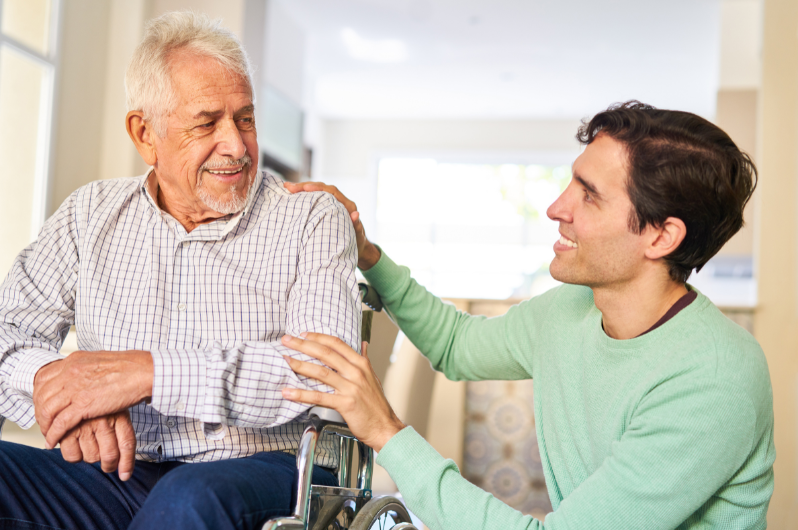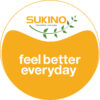Strokes are serious, but it should be noted that depending on the strategy of rehabilitation required for a patient, one can become a full-fledged member of society again. Many stroke patients are faced with certain complexities in getting better health due to the effects of this disease and at Sukino Healthcare, we are geared towards ensuring comprehensive care solutions to increase the speed of getting back to normal life. Below is a list of 9 things that you can do and or avoid in an effort to speed up your neurologic recovery after stroke
Speeding Up Stroke Recovery: Key Strategies for Success
1. Seek Immediate Medical Attention
The first and biggest risk that has to be taken in the process of stroke recovery is always to seek for a doctor’s care immediately. This is why time is a key factor when it comes to the treatment of stoke and its adverse effects. The quicker one is treated, the higher the likely hood of the individual recovering. Specialists can then give clot dissolving medicines or mechanically remove the obstruction to slash the extent of the stroke.
Why Immediate Attention Matters
Strokes are treatable symptoms that require immediate attention so as to avoid the worsening of the condition and further damage of the brain tissue. The early hours of stroke are very sensitive, and the sooner you get to a hospital, the better it is. It means that early interference can result in less time needed to recuperate and minimize the intensity of the consequences. Always recognize the symptoms of a stroke: They include face, arm, and speech drooping; numbness or weakness of the face, arm, or leg, especially on one side of the body; confusion, trouble speaking or understanding others; vision problems; and difficulty walking or staying balanced. Thus, if you or any other person is experiencing these symptoms, you are advised to call the emergency services.
2. Follow a Personalized Rehabilitation Program
There’s a significant variation even in the strategies applied while each stroke, and in the same manner every survivor’s journey is unique. Individualized rehabilitation is critical since the requirements and capabilities of the patients differ significantly. At Sukino Healthcare, we create treatment depending on all the needs that a stroke patient may have, and the reclusive therapies are; physical therapy, occupational, and speech therapy.
Components of a Rehabilitation Program
Physical therapy aims at increasing mobility to have strength either be it voluntary or involuntary in controlling muscles and their coordination. Occupational therapy is the process by which your skills necessary for dressing, eating, bathing, and other fundamental tasks are rehabilitated. Other intervention services are necessary in case the stroke impacted the ability of the person to speak and/or understand language. This has of course led to many more consultations with and steps toward our patients who are carefully guided by our team of counsellors as they understand their achievable and realistic aims and strategies while continuously motivating themselves for the next steps in case of any stagnation.
3. Adopt a Healthy Diet
The study also proves the significance of nutrition in the process of stroke rehabilitation. Healthy dieting can help one gain strength, prevent other strokes and other diseases in addition to enhancing overall health. Rather just basically eating less, increase the proportion of fruits, vegetables, lean proteins, whole grains, and healthy fats within one’s diet. Exclude refined foods, too much salt, and sugar since they lead to high blood pressure, and high cholesterol, which leads to other diseases.
The Role of Nutrition in Recovery
A balanced diet ensures that your body is supplied the nutrients that are required for healing and all round body functioning. For example, complex carbohydrates food like berries and greens increases our brain power and decreases inflammation in the body. Supplements containing omega-3 unsaturated fats that available in fish such as salmon and mackerel are good for the heart and could enhance neurological rehabilitation. Also, eating and drinking right is essential to avoiding issues like constipation or formation of kidney stones that possibly can result to formation of urinary tract cancer.
4. Engage in Regular Physical Activity
Physiotherapy is among the many important elements of rehabilitation after a stroke. Exercise plays an important role in the improvement of the general health of the heart muscles, muscles of the body, the flexibility of muscles, and the balancing systems of the body as well. It also raises the level of mood and psychological well-being, which are necessary for success in the fight against the disease and maintaining a positive view of the world. In this case, different types of exercise are included in the rehabilitation regimes at Sukino Healthcare spanning from more intensive to less intensive depending on the patient’s capabilities and elevation in progress.
Types of Exercises for Stroke Recovery
Some examples are exercising very lightly that is taking a walk, swimming or stretching lightly is very constructive. Further on, it is necessary to include exercises with weights in your routine to restore muscular tissues in addition to coordination. Postural control exercises like standing on one leg or using a balance board should be some of the necessities that people should take to avoid fall and gain balancing skills. It is crucial to consult a physical therapist to conduct the activities in the right manner and to avoid straining the body and causing some injury.
5. Prioritize Mental Health
Stroke recovery is never limited to the physical aspect of the body; the psychological aspect also needs care and attention. Emotional affects common in the survivors include depression, anxiety, and frustrating state among others. They are all issues whose resolution is central to the process of recovery. At Sukino Healthcare, it is our responsibility to offer psychological assistance, including psychotherapy, to assist the heads in dealing with the emotional consequences of a stroke.
Mental Health Strategies
Psychoeducation and other behavioral treatments, including cognitive-behavioral therapy (CBT) can help in managing ill-thought processes and mood. Individual and group therapy enable the patient to meet or interact with other patients with a view to learning from patient experiences. Meditation and conscious breathing are some of the relaxation strategies that help in wiping out stress while at the same time enhancing concentration. You must also establish and sustain social relationships and do recreational activities because they can remove boredom and have orderly routines that are normalcy during the recovery process.
6. Monitor and Manage Medical Conditions
It is a common occurrence for stroke patients to have chronic diseases that need to be controlled to avoid other complications. Such chronical diseases as hypertension, diabetes, and high cholesterol must be controlled and treated appropriately. As with any chronic conditions, these must be managed with strict monitoring with your healthcare provider so that your treatment plan needs to be modified or not can be addressed accordingly.
Importance of Regular Monitoring
To prevent the recurrence of another stroke and enhance health, these conditions must be properly managed. This may require administering of drugs, alteration of the diet, or a combination of the two. For instance, managing the pressure with medicine and modification of diet will also help to decrease the load on the cardiovascular system. Likewise, to keep blood sugar levels in check one needs to consume right, exercise, and even take drunegs always if suffering from diabetes. These conditions can be easily managed through periodic blood tests, and doctor appointments so if there is any problem with these, then it will easily be detected.
7. Utilize Assistive Devices
On this basis, it can be stated that assistive devices can be a great source of support for stroke survivors in their attempts at regaining as much independence as possible and increasing the quality of their daily lives. These devices include basic ones such as the grab bars and walking sticks to highly advanced devices like the speech-generating devices, and even the robotic exoskeleton. We at Sukino Healthcare utilize this list to evaluate each patient’s condition and determine the best assistive devices fit for recovery.
Types of Assistive Devices
Walking sticks, rollators, and wheel chairs, are other means that could assist in increasing safety and stability when in motion. Daily living aids include instruments that are designed and customized in a manner that enhances the ability of a disabled person to perform specific activities by themselves; they include spoons and forks among others, dressing aids among others. For the ones who face such issues as speaking disturbances there is an opportunity to use picture exchange communication or speech producing equipment. These devices significantly improve a stroke survivor’s functional independence in executing tasks and engaging in various social interactions and should be promoted for their impact on the quality and efficiency of rehabilitation.
8. Maintain a Support Network
Stoke care requires effective support from family/friends so as to have a swift and proper recovery. When choosing a diet plan, it is essential to note that family, friends and caregivers are key influential participants in the Daily Meal Plan plan besides encouraging and supporting decision making. At Sukino Healthcare, we advise that the families engage the relatives of the patient in the rehabilitation process as well as provide them with the necessary tools and training as they assist the stroke survivor through the process.
Building a Support Network
The involvement of family members and friends in the process of rehabilitation allows for the formation of an atmosphere of concern for the patient and his or her expectations. This is because the caregivers require information regarding the state of the stroke survivor in order to help him perform daily and occupational activities as well as the exercises that are recommended for regaining health. Through support groups, whether physical or online, people are in a position to share with others, get a chance to learn, and get motivated by people with similar ordeal as them. Such bipartisan support can strongly recommend the stroke survivor’s well-being and his or her will to get back on the feet.
9. Stay Positive and Patient
Speech and mobility, at times, might take years to regain especially for people who have suffered a stroke. As with most endeavors in life it is crucial to remain positive and to savour the small successes that are made on the journey. The pace of healing might not always be fast. This is why, keeping a smile on your face and having a little more patience with oneself can really change your recovery for the better.
Cultivating Positivity
Stating numerous smaller objectives and recognizing one’s success may prompt the individual to strive towards the set goals without becoming discouraged. Choose people that encourage you, be active in things that make you happy and treat yourself kindly. Always bear in mind that recovery is a process and one may experience relapses as and when the process is undergoing. It stands to reason that if every person suffering from the consequences of a stroke is determined, receives support, and is guided by adequate strategies, life can be full and satisfying.
Conclusion
Stroke rehabilitation is a broad and complex process that needs to be tailored according to a patient’s needs. Please allow Sukino Healthcare to extend to you the best care to help you on your path to healing. Following the given nine tips: going to the doctor immediately, adhering to the developed rehabilitation plan, eating a healthy diet, exercising, paying attention to mental health, controlling the disease’s progression and potential complications, using helpful devices, having a supportive network, and staying positive and patient, one can improve the rehabilitation process and strive for leading a fulfilling life free from the disease’s impact. As you slowly move and complete every phase let it be known that each one of them is a step forward towards regaining a better health and a happy life after starting.
We are India’s first comprehensive continuum care provider. We provide multidisciplinary out of hospital care to acute and post-acute and chronically ill patients at our critical care facilities and your home.


